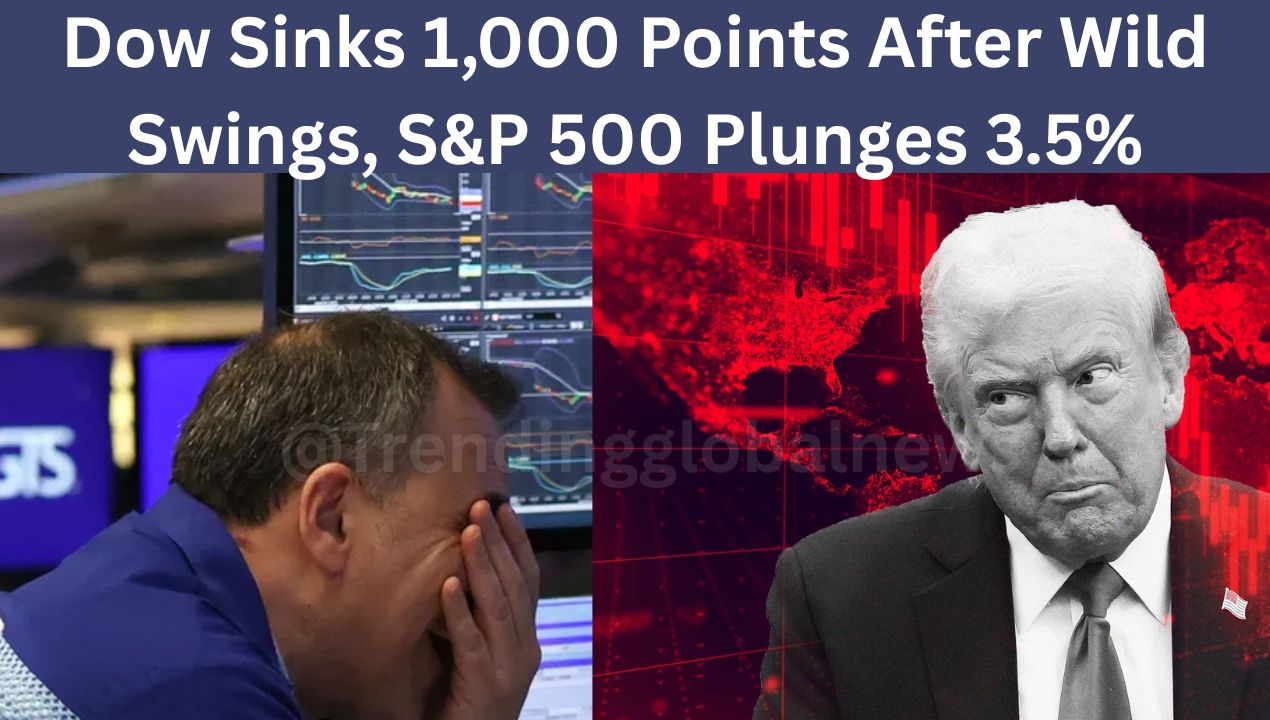The US stock market just rode a financial rollercoaster, and investors are feeling the whiplash. After a stunning rally earlier in the week, markets took a nosedive on Thursday, April 10, as new concerns around U.S.-China trade tensions threw Wall Street into chaos.

Let’s break down what happened, why it matters, and what investors should watch going forward.
From Euphoria to Panic: A Week of Wild Swings
At the start of the week, the markets were buzzing with optimism. President Donald Trump had just announced a 90-day pause on new tariffs—a move seen as a possible thaw in the ongoing U.S.-China trade war. That news sparked one of the biggest rallies in years. The S&P 500 surged 9.5% in a single day, marking one of its top 10 best performances in nearly a century.
But that optimism didn’t last.
Just a day later, the White House clarified that while there would be a delay in some tariffs, new duties would actually be raised to a staggering 145% on many Chinese goods. This sudden reversal sent shockwaves through global markets, yanking investors from celebration to concern almost overnight.
Thursday’s Bloodbath in US Stock Market: The Numbers
Here’s what the carnage looked like by the end of Thursday’s trading session:
- Dow Jones Industrial Average: Dropped 1,014 points (-2.5%)
- S&P 500: Fell 3.5%
- Nasdaq Composite: Plunged 4.3%
This dramatic reversal wiped out most of the previous day’s gains and signaled just how fragile market sentiment is right now.
What’s Fueling the Fear in US stock market?
The main driver: uncertainty.
Markets hate unpredictability, and the flip-flop on tariffs sent a message that economic and trade policy could change on a whim. This raised fears about how the escalating trade war with China could hurt consumer prices, corporate profits, and global supply chains.
On top of that, the U.S. economy is already showing signs of strain. Add in higher borrowing costs, cautious corporate guidance, and signs of slowing global growth—and you’ve got the perfect storm for a sell-off.
US Stock Market: Sectors That Took the Biggest Hit
Not all stocks are feeling the pain equally. Here’s a look at some of the worst-hit sectors and names:
📉 Tech Stocks
- Nvidia: Fell 5.9% and is down over 21% for the year.
- Tesla: Took a brutal hit, dropping 15.1% on Monday alone and is now down nearly 45% for the year.
🧳 Travel & Consumer Stocks
- United Airlines: Down 8.4%
- Carnival Corp.: Lost 9.2%
These consumer-driven stocks are particularly vulnerable to economic slowdowns, as people cut back on discretionary spending during uncertain times.
US Stock Market: Are We Headed for a Recession?
Bond markets are flashing warning signs. The 10-year Treasury yield has been bouncing around, indicating deep market anxiety. Meanwhile, the Cboe Volatility Index (VIX)—a popular measure of market fear—shot back above 40.
Some economists now estimate a 50/50 chance of a recession over the next year if the current policy path continues. Investors are worried that aggressive tariffs could choke supply chains, push inflation higher, and ultimately weigh down both consumer demand and business investment.
Investor Tips: What to Do in This Volatile Market
If you’re an investor watching the chaos unfold, here are some practical tips:
- Stay Calm, Stay Smart
Volatility is part of the game. Don’t let short-term noise derail your long-term plan. - Reduce Exposure
Experts recommend trimming riskier assets and focusing on capital preservation during uncertain times. - Build Your Watchlist
Keep an eye on high-quality stocks with strong fundamentals. When the market stabilizes, those names often lead the recovery. - Diversify
Make sure your portfolio isn’t too heavily weighted in one sector, especially the ones facing the most uncertainty like tech or travel.
The US stock market’s sharp dive this week was a stark reminder of just how sensitive Wall Street is to policy decisions and global events. One day’s optimism can quickly turn into the next day’s panic.
With trade tensions still simmering and economic indicators flashing caution, investors should brace for more volatility ahead. Whether this is a temporary correction or the start of something more serious will depend largely on how policymakers respond in the coming weeks.
Stay tuned. Stay informed. And as always—invest wisely.
